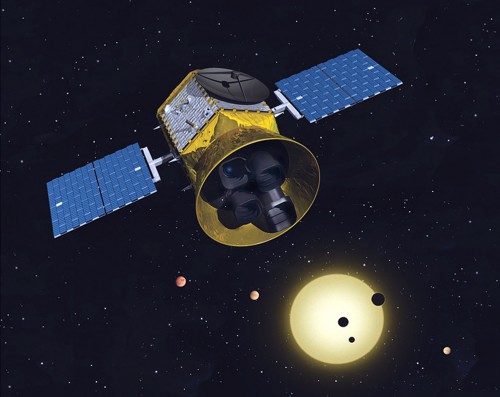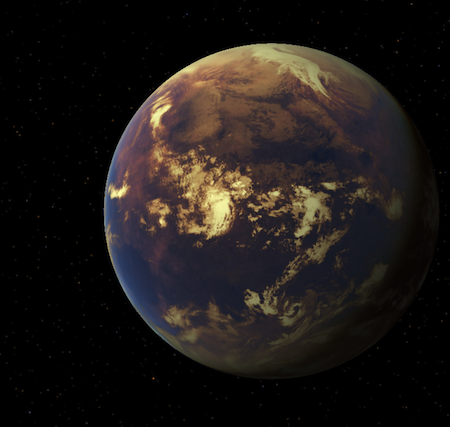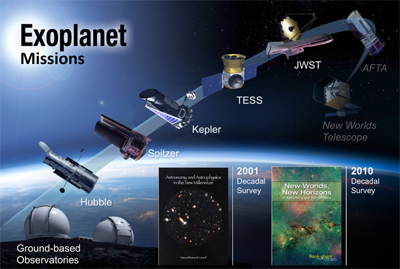
The search for exoplanets is about to enter an exciting new phase, as the Transiting Exoplanet Survey Satellite (TESS) mission has now been cleared for development by NASA. TESS will greatly expand the number of stars being observed for evidence of exoplanets orbiting them, as the next step forward from the Kepler space telescope and others which have already found thousands of such worlds outside of our own Solar System.
“This is an incredibly exciting time for the search of planets outside our solar system,” said Mark Sistilli, the TESS program executive from NASA Headquarters, Washington. “We got the green light to start building what is going to be a spacecraft that could change what we think we know about exoplanets.”

TESS will scan the entire sky with four cameras in its search, in both hemispheres, rather than focus on one particular patch of sky like Kepler does. The preliminary mission will last for two years, followed by a third year where ground-based telescopes will continue to monitor the exoplanets found during the first two years by TESS. By the end of the mission, TESS should have covered about 90 percent of the sky.
According to TESS Principal Investigator George Ricker of the Massachusetts Institute of Technology, Cambridge, Mass., “During its first two years in orbit, the TESS spacecraft will concentrate its gaze on several hundred thousand specially chosen stars, looking for small dips in their light caused by orbiting planets passing between their host star and us.”
TESS is anticipated to find at least 5,000 new exoplanet candidates, from large gas giants to smaller rocky worlds like Earth. At least 50 new Earth-sized exoplanets are expected to be found, some of which would hopefully orbit in the “habitable zone” of their stars, where temperatures and other conditions could allow liquid water to exist on their surfaces. These would be the most exciting discoveries: exoplanets which are similar to Earth and may support some kind of life.
As TESS Project Manager Jeff Volosin at NASA’s Goddard Space Flight Center in Greenbelt, Md., explained, “The most exciting part of the search for planets outside our solar system is the identification of ‘earthlike’ planets with rocky surfaces and liquid water as well as temperatures and atmospheric constituents that appear hospitable to life.” He added, “Although these planets are small and harder to detect from so far away, this is exactly the type of world that the TESS mission will focus on identifying.”

The next major step for the mission is the Critical Design Review in 2015.
“After spending the past year building the team and honing the design, it is incredibly exciting to be approved to move forward toward implementing NASA’s newest exoplanet hunting mission,” Volosin said.
Also different from Kepler, TESS will be able to find exoplanets orbiting stars closer to Earth than Kepler can, within a couple hundred of light-years.
“TESS should discover thousands of new exoplanets within two hundred light years of Earth,” Ricker said. “Most of these will be orbiting bright stars, making them ideal targets for characterization observations with NASA’s James Webb Space Telescope.”

As Volosin added, “The Webb telescope and other teams will focus on understanding the atmospheres and surfaces of these distant worlds, and someday, hopefully identify the first signs of life outside of our Solar System.”
Discovering exoplanets closer to home will be important in the search for life elsewhere. With these exoplanets, it will be easier for other coming missions, such as the James Webb Space Telescope, to determine their characteristics, such as density and atmospheric conditions, which could help scientists determine which exoplanets may have a habitable environment.
“This unique new data will comprise a treasure trove for astronomers throughout the world for many decades to come,” Ricker said. Volosin sums the mission up nicely: “I’m still hopeful that in my lifetime, we will discover the existence of life outside of our solar system and I’m excited to be part of a NASA mission that serves as a key stepping stone in that search.”
More information about TESS is available here.
Want to keep up-to-date with all things space? Be sure to “Like” AmericaSpace on Facebook and follow us on Twitter: @AmericaSpace




While I am enthusiastically waiting for TESS and all other projects to find extrasolar planets, the capability of TESS for finding potentially habitable planets is really being oversold. Its observing strategy is best suited for finding large planets in tight orbits around their suns – the types of planets that will be too large and too hot to be habitable. It is highly improbable that TESS will find an Earth-size planet in an Earth-like orbit around a Sun-like star. It’s best bet for finding a potentially habitable planet is around red dwarf stars. It needs to be remembered that the primary objective of TESS is to find a lot of relatively easy-to-observe transiting planets orbiting bright stars that can be subsequently studied in detail using ground- and space-based instruments.
Paul,
Will TESS look at Alpha Centauri and Proxima Centauri or has been settled that are not any exoplanets in those systems that could harbor life?
TESS will be observing Alpha Centauri and Proxima Centauri for transits along with all stars brighter than magnitude 12 (along with the 1000 closest red dwarfs). In addition, Proxima Centauri is on the list of stars being observed by ESA’s current Gaia astrometry mission (which has the best chance of any survey to date of detecting planets around Proxima). Unfortunately, the two sun-like stars of Alpha Centauri are too bright to be observed by Gaia.
The question about habitable planets is still very much open while the detection of Alpha Centauri Bb remains unconfirmed.
http://www.drewexmachina.com/2014/08/11/the-search-for-planets-around-alpha-centauri/
I’m not sure if it will or not, but I can try to find out. As far as I know the Alpha Centauri and Proxima Centauri exoplanets are still being debated. I want to know too!